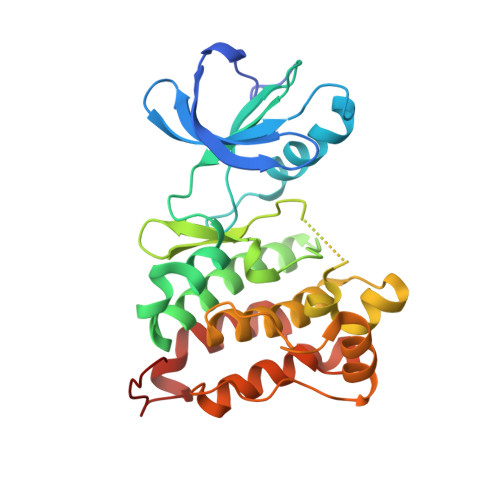Hybrid compound design to overcome the gatekeeper T338M mutation in cSrc
Getlik, M., Grutter, C., Simard, J.R., Kluter, S., Rabiller, M., Rode, H.B., Robubi, A., Rauh, D.(2009) J Med Chem 52: 3915-3926
- PubMed: 19462975
- DOI: https://doi.org/10.1021/jm9002928
- Primary Citation of Related Structures:
3F3V, 3F3W, 3G5D - PubMed Abstract:
The emergence of drug resistance remains a fundamental challenge in the development of kinase inhibitors that are effective over long-term treatments. Allosteric inhibitors that bind to sites lying outside the highly conserved ATP pocket are thought to be more selective than ATP-competitive inhibitors and may circumvent some mechanisms of drug resistance. Crystal structures of type I and allosteric type III inhibitors in complex with the tyrosine kinase cSrc allowed us to employ principles of structure-based design to develop these scaffolds into potent type II kinase inhibitors. One of these compounds, 3c (RL46), disrupts FAK-mediated focal adhesions in cancer cells via direct inhibition of cSrc. Details gleaned from crystal structures revealed a key feature of a subset of these compounds, a surprising flexibility in the vicinity of the gatekeeper residue that allows these compounds to overcome a dasatinib-resistant gatekeeper mutation emerging in cSrc.
- Chemical Genomics Centre of the Max Planck Society, D-44227 Dortmund, Germany.
Organizational Affiliation:

















